One of the core components of a solar power system is the solar inverter, which converts the DC power generated by the solar panels into AC power for household electricity.
The market has two main types of inverters: micro inverter and string inverter. When faced with the decision between microinverters and string inverters for your solar energy system, the choice often hinges on your reliance on the system and your budgetary considerations. However, given that there are multiple distinctions between these two solar inverter designs, it is prudent to thoroughly compare the advantages and disadvantages of each before arriving at a final decision.
This comprehensive guide to micro inverter vs string inverter can be a valuable resource.
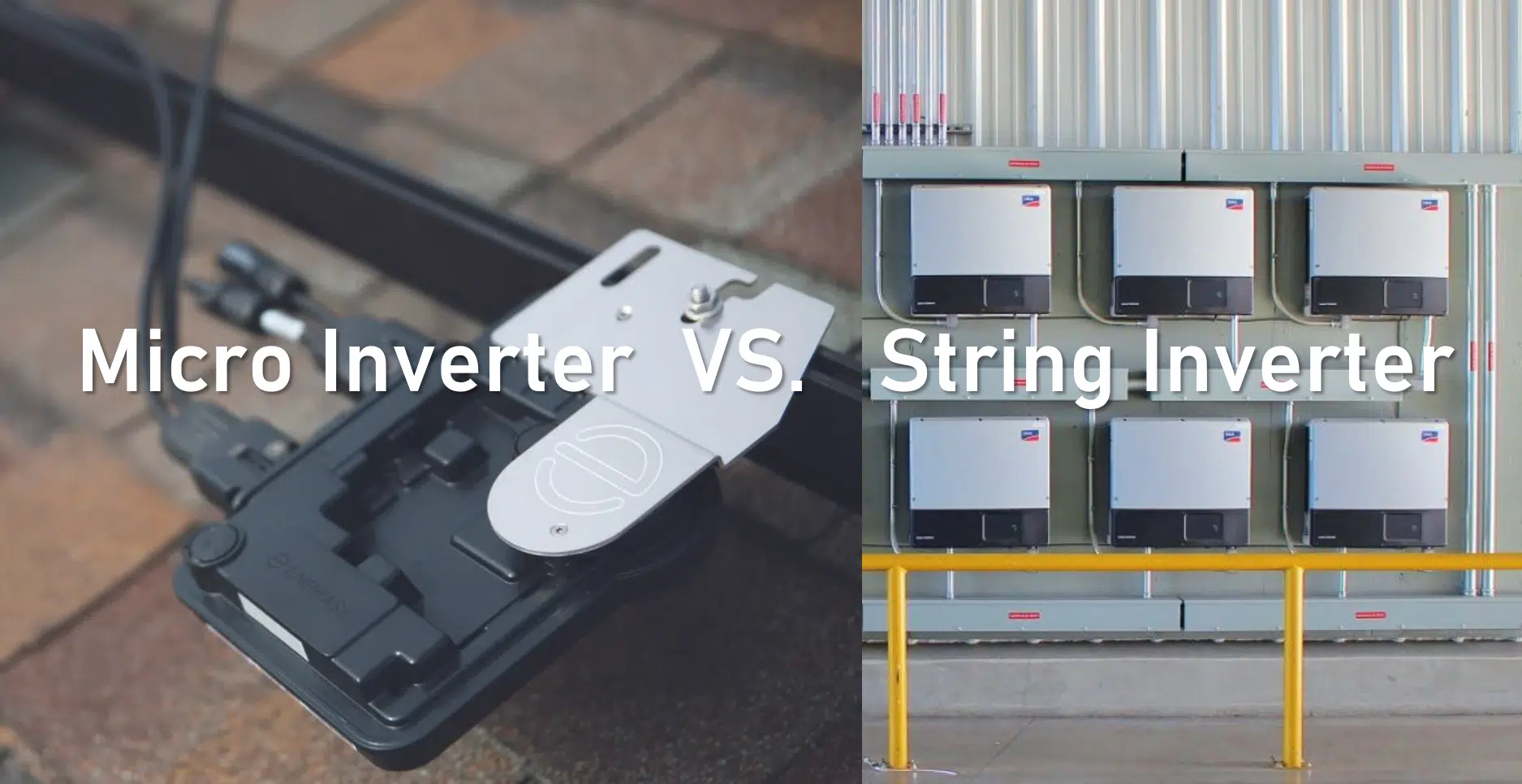
Micro Inverter vs String Inverter: What’s the Difference?
Distinguishing between microinverters and string inverters primarily revolves around where and when they perform the conversion of DC (direct current) energy to AC (alternating current) energy.
Microinverters are affixed directly to individual solar panels, facilitating the conversion of electrical current at the point of generation. On the other hand, a string inverter is installed on your house and undertakes the conversion of electrical currents from all the solar panels at a centralized location.
Microinverters are installed at each solar panel, offering efficient performance in diverse conditions but come with a higher upfront cost. String inverters, centralized and more cost-effective initially, process power from multiple panels, but shading may impact their efficiency. The decision hinges on factors like system size, layout, maintenance preferences, and long-term cost considerations.
| Microinverter | String Inverter |
| Expensive | Affordable |
| Track performance easily |
Can’t be monitored remotely |
| Complex troubleshooting | Easy troubleshooting |
| Rapid shutdown enabled |
No emergency shutdown |
| More reliable |
Less efficient |
| A lot of hardware is used | A lot of hardware is used |
| Easy to expand |
More tasking to expand |
| Complex to maintain | Easier to maintain |
| 25 years |
8-12 years |
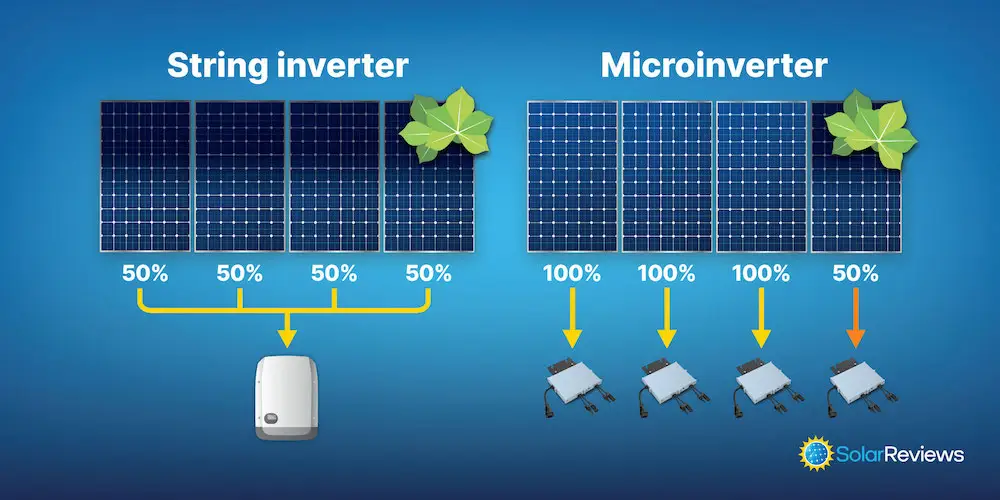
What Are Solar Inverters?
Solar inverters are essential components in a solar energy system. As sunlight interacts with solar cells, it generates direct current (DC) electricity. However, since most households use alternating current (AC), solar inverters play a crucial role in converting DC electricity into a more usable AC form. The physical hardware of a solar inverter, equipped with various ports and connectors, facilitates this conversion, allowing the electricity produced by solar panels to power household appliances and be fed into the electrical grid. Solar inverters enable efficient utilization of solar energy, ensuring that excess power can be sent back to the grid for credits, providing a versatile and sustainable energy solution for homes.
What Is a Solar Micro Inverter?
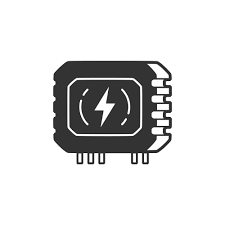
One distinguishing feature is the use of Maximum PowerPoint Tracking (MPPT) technology. This ensures that the voltage goes through each microinverter independently, preventing issues with one panel from affecting the performance of others in the system. This flexibility is particularly advantageous when panels face different directions or are partially shaded.
Unlike string inverters, where issues with one panel can impact the entire system, microinverters operate on a per-panel basis. If one panel encounters an issue, only that specific panel is affected, and the rest of the system continues to function seamlessly. The absence of a single point of failure is a significant advantage of microinverters, making them a compelling choice for solar power systems.
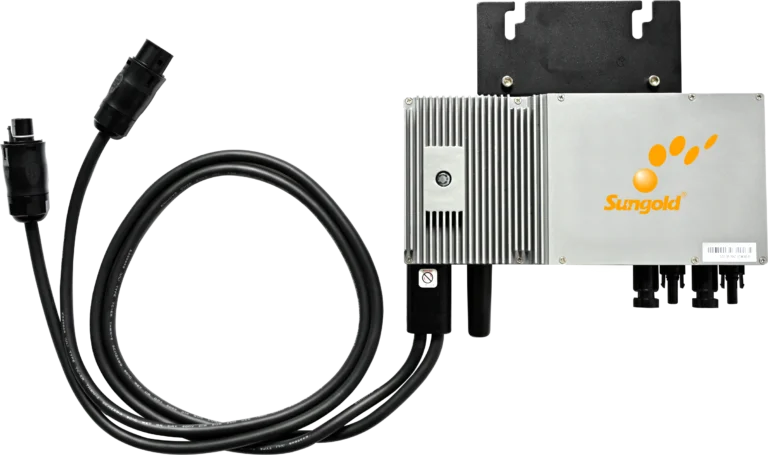
Pros and Cons of Micro Inverters for Solar Panels
Pros:
- Microinverters offer immediate shutdown capabilities to mitigate high-voltage risks.
- Each panel operates independently, ensuring the entire system functions efficiently even in the event of a single panel failure.
- Independent operation allows for higher electricity production compared to traditional stringing configurations.
- Microinverters provide flexibility for panels facing different directions or dealing with shading issues.
- Microinverters can monitor and track the performance of individual panels, facilitating easy adjustments.
- Conveniently expand the system by adding one microinverter and panel pair at a time.
- Microinverters typically come with 25-year warranties, ensuring a durable and reliable lifespan.
Cons:
- Microinverters are pricier upfront, costing approximately $1000 more than other systems.
- Detecting and replacing failed microinverters can be challenging due to their intricate design.
- Each microinverter linked to a panel may clutter the roof, and they can act as lightning rods, requiring caution in storm-prone regions.
What Is A String Inverter?
A string inverter operates differently from microinverters by connecting all solar panels in a system to a central component, forming a “string” of panels. This established technology has a strong historical performance.
The inverter can manage multiple panels simultaneously, organizing them into strings that enhance overall system performance. The size of the string inverter determines the number of panels in the system, allowing for experimentation with string sizing if one has the technical knowledge.
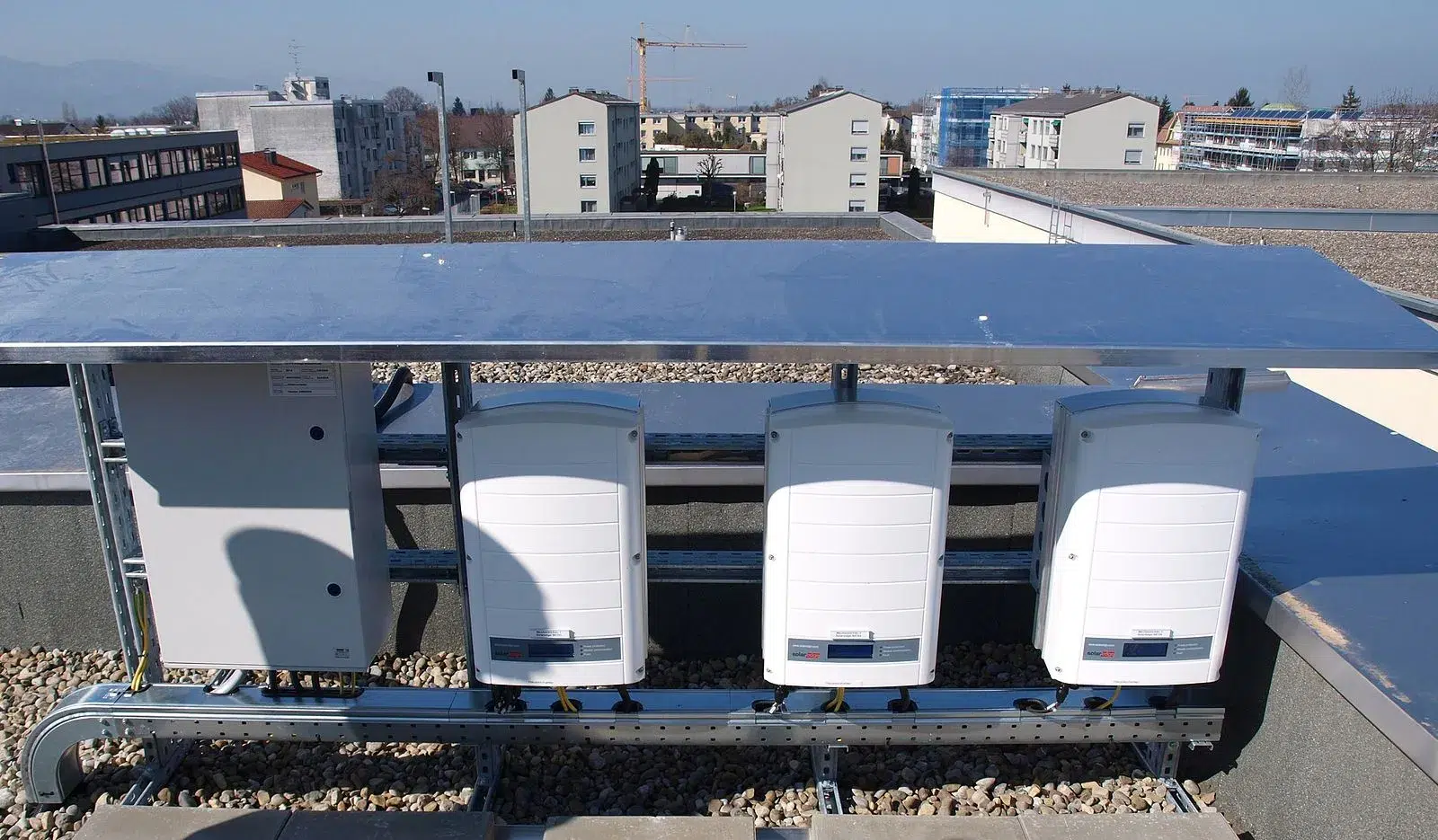
Pros and Cons of String Inverters
Pros:
- The simplicity of the setup makes it easy to identify and address issues, with the central component facilitating straightforward troubleshooting.
- Central inverter systems are cost-effective to install, requiring fewer labor hours and less equipment compared to microinverters.
- With fewer connections in the entire setup, the risk of wiring mix-ups or poor connections is minimized, contributing to a more reliable system.
- String inverter systems are easy to maintain due to the simplicity of their design, involving fewer types of solar panel connectors and equipment.
Cons:
- The working principle of central inverters makes them less efficient, as the performance of one panel can significantly impact the entire setup. This is particularly problematic in cases of partial shading.
- It is challenging to track the individual performance of each panel when they are in a chain. Monitoring is limited to checking the total power output, making it difficult to identify specific panel issues.
- Expanding the system with new panels requires linking them in a string with a new central inverter, a process that can be cumbersome and costly compared to expanding with microinverters.
- String inverters typically have shorter warranties, ranging from 8 to 12 years, necessitating the purchase of a new inverter at some point after solar panel installation.
Are String Inverters Better Than Micro Inverters?
Choosing between microinverters and string inverters depends on your specific needs, preferences, and budget. Microinverters excel in high efficiency, reliability, and individual panel monitoring but come with a higher cost. On the other hand, string inverters offer a cost-effective solution, easy troubleshooting, and maintenance, but lack features like emergency shutdown and individual panel monitoring.
Ultimately, the decision hinges on what you prioritize in an inverter system. Both microinverters and string inverters effectively convert solar panel DC to household AC power, and the choice is subjective based on your preferences.
RV Solar System: Microinverter or String Inverter?
Micro inverters are more efficient, especially in shaded or complex installations, because they optimize the power output of each panel. They also allow you to monitor the performance of each panel and detect any issues more easily. However, microinverters are more expensive, harder to access, and may have shorter warranties than string inverters.
String inverters are cheaper, simpler, and easier to install and maintain than micro inverters. They are ideal for large, unshaded, and uniform installations, where all the panels face the same direction and receive the same amount of sunlight. String inverters are less efficient because the power output of the entire system is limited by the lowest-performing panel in the string. They also require additional devices, such as power optimizers or rapid shutdown devices, to meet electrical code and safety standards.
Therefore, the best option for an RV solar system may depend on your specific design and budget. If the RV solar kits needs higher power generation efficiency you can install a micro inverter to convert solar power to DC, if you’re looking for a simple wiring installation and fewer components you can choose a string inverter.
FAQs About Microinverter vs String Inverter
Are string inverters better than micro inverters?
This depends on the size and design of your solar system, as well as your budget and preferences. String inverters are generally cheaper, more reliable, and easier to install and maintain than microinverters. However, microinverters offer higher efficiency, flexibility, and safety than string inverters, as they convert DC to AC at each panel and avoid the impacts of shading or panel mismatch.
What are the downsides of microinverters?
Microinverters are more expensive, complex, and prone to failure than string inverters. They also require more wiring and installation time, and may not be compatible with all types of solar panels. Microinverters may also have lower power output and shorter warranties than string inverters.
What are the disadvantages of string inverters?
String inverters have lower efficiency, performance, and safety than microinverters, as they convert DC to AC at a central location and are affected by the lowest-performing panel in a string. String inverters also have limited monitoring and optimization capabilities, and may not work well with complex or shaded roofs. String inverters need to be paired with power optimizers or rapid shutdown devices to meet electrical code standards.
Are microinverters better than optimizers?
Both microinverters and optimizers are module-level power electronics (MLPEs) that improve the performance and safety of solar systems. Microinverters convert DC to AC at each panel, while optimizers regulate the voltage and current at each panel and send DC to a string inverter. Microinverters are more efficient and independent than optimizers, but optimizers are cheaper and more compatible than microinverters. The choice between microinverters and optimizers depends on your system size, design, and budget.
Are solar panels with micro inverters better?
Solar panels with microinverters are better in terms of efficiency, flexibility, and safety than solar panels with string inverters. Solar panels with microinverters can produce more power, adapt to different roof orientations and angles, and reduce fire and shock hazards. However, solar panels with microinverters are also more expensive, complex, and difficult to install and maintain than solar panels with string inverters.











